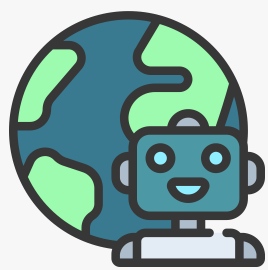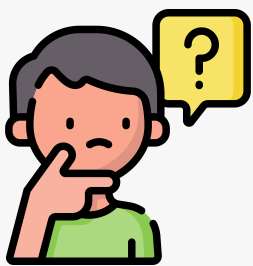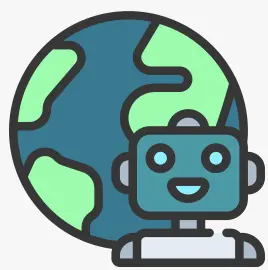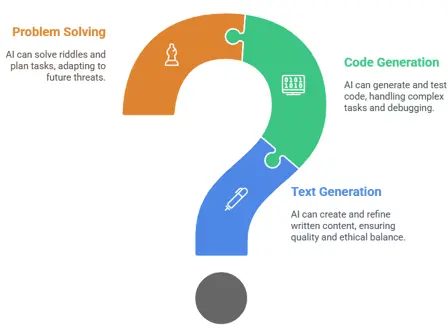Agentic AI Certification Training Course
- 17k Enrolled Learners
- Weekend/Weekday
- Live Class
Think about writing a very important email. You write a draft and then stop to think about it. Does it have the right tone? Is it good enough? Then you go back and make it better. This cycle of making things and thinking about them is at the heart of human intelligence, and now AI is coming up.
The Agentic AI Reflection Pattern is an organized way for AI agents to think about their own work, criticize it, and get better over time. This pattern is changing the way machines think about how they think, whether they are solving hard math questions, writing essays, or making code.

Let’s zoom into the core idea behind this pattern, what exactly is this “reflection” that gives AI an edge?
In AI, the Reflection Pattern is a feedback loop in which an agent creates a product, thinks about how good or accurate it is, and then makes it better. This is especially helpful for hard jobs where the first try often needs to be improved. For example, suppose an AI is tasked with writing a haiku. The first version may miss the 5-7-5 syllable rule. Through reflection, it realizes this and regenerates a better version.
output = generate_output(task) reflection = critique_output(output) if reflection == 'needs_improvement': output = regenerate_with_feedback(reflection)

Thinking about things helps you be more accurate, creative, and trustworthy. It also adds a level of metacognition, or thinking about thinking, that lets agents fix themselves without help from outside sources. For example, In a QA system, if the model generates a wrong answer, reflection allows it to say, “Wait, that doesn’t sound right,” and then look for a better answer before delivering it.

The agent performs the initial task: answer a question, write text, generate code, etc.
initial_output = model.generate("What causes climate change?")
The agent critiques its own output using a separate reasoning model or prompting strategy.
reflection = model.reflect(f"Is this a complete and scientifically accurate answer? {initial_output}")
If needed, the model regenerates or refines the output using feedback from reflection.
if 'missing key causes' in reflection:
refined_output = model.generate("Try again, include all key causes of climate change.")
The generator creates a response.
The reflector critiques the output.
If the critique indicates flaws, a new response is generated.
The cycle continues until the output passes reflection.
For example, AI writes a function to sort a list. It checks whether it handles edge cases (empty list, duplicates). If not, it retries.
Let’s consider an AI solving a logic puzzle:
reflection_prompt = f"Is this solution logically consistent and valid? {solution}"
reflection = model.reflect(reflection_prompt)
if 'logical error' in reflection:
new_solution = model.generate("Try again, fix the logical error.")
reflection = model.reflect(f"Critique this revised solution: {new_solution}")
Repeat until reflection shows no error.
Reflection says “valid” or “no error”
Maximum iterations reached
Here are few real-world examples below:
Self-RAG (Self-Reflective Retrieval-Augmented Generation) takes traditional RAG a step further by evaluating the generated answer and refining it based on reflection.
For example, In customer support, an agent retrieves knowledge, answers the query, and then reflects—“Did I use the most relevant document?”
| Feature | Traditional RAG | Self-RAG |
|---|---|---|
| Answer Generation | One-shot | Iterative |
| Quality Check | None | Through reflection |
| Performance | Medium | High in complex tasks |

Think of it as a personal coach inside the AI, guiding it to do better each time.

AI writing articles that check their own grammar, tone, or completeness.
AI writing code, then testing and debugging it via reflection.
code = model.generate("Python function to reverse string")
test = model.reflect("Does this handle unicode characters?")
AI solving riddles, math, or planning tasks and re-evaluating results.
For example, In chess-playing AI, evaluating if a move considers future threats and adjusting accordingly.
We are getting closer to AI systems that can not only make things, but also think, criticize themselves, and get better. It’s like how people learn: they don’t get everything right the first time, they have to go back and fix things. More people will use this pattern, which means AI will become more reliable, clear, and smart.
Want to learn more about Agentic AI? Explore our online course on Agentic AI.
Q1: Is the reflection pattern only for text-based models?
A: No. It can be used in multi-modal settings like image generation, planning, or robotics.
Q2: Does reflection make AI slower?
A: Yes, slightly—but with major improvements in quality, reliability, and interpretability.
Q3: Is reflection done by a different model?
A: Not necessarily. It can be the same model using a different prompt structure or objective.
 Thank you for registering Join Edureka Meetup community for 100+ Free Webinars each month JOIN MEETUP GROUP
Thank you for registering Join Edureka Meetup community for 100+ Free Webinars each month JOIN MEETUP GROUPedureka.co